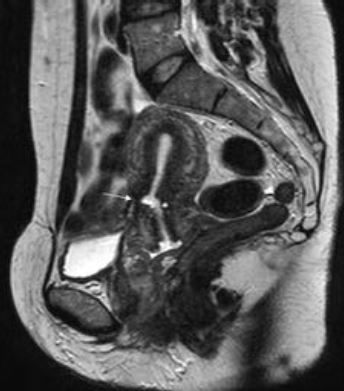Utilidad de la RM en las complicaciones de la cicatriz de cesárea.
Palabras clave:
complicaciones de la cicatriz de cesárea, poster, seramResumen
Objetivos Docentes
Describir diferentes tipos de complicaciones que podemos encontrarnos asociadas a la cicatriz de cesárea y describir sus hallazgos característicos en resonancia magnética (RM)
Revisión del tema
INTRODUCCIÓN
La tasa de partos por cesárea ha aumentado en España, casi un 10% en los últimos diez años. Aunque la Organización Mundial de la Salud recomienda situar la tasa de parto por cesárea en un 1015%,
España tiene actualmente, una tasa de un 25,25%, según los últimos datos publicados por el Ministerio de Sanidad. Aún así es inferior a la tasa de otros países como Brasil cuya tasa de parto por cesárea es 52%,
Italia 38%, México 39% y Estados Unidos 33%.
Descargas
Citas
Dicle O, Küçükler C, Pirnar T, Erata Y, Posaci C. Magnetic resonance imaging evaluation of incision healing after cesarean sections. Eur Radiol 1997;7 (1):31–34.
Bij de Vaate AJ, Brölmann HA, van der Voet LF, van der Slikke JW, Veersema S, Huirne JA. Ultrasound evaluation of the cesarean scar: relation between a niche and postmenstrual spotting. Ultrasound Obstet
Gynecol 2011;37(1):93–99.
Morris H. Surgical pathology of the lower uterine segment caesarean section scar: is the scar a source of clinical symptoms?
Regnard C, Nosbusch M, Fellemans C, et al. Cesarean section scar evaluation by saline contrast sonohysterography. Ultrasound Obstet Gynecol 2004; 23(3):289–292.
Jastrow N, Chaillet N, Roberge S, Morency AM, Lacasse Y, Bujold E. Sonographic lower uterine segment thickness and risk of uterine scar defect: A systematic review. J Obstet Gynaecol Can. 2010; 32:321—7
Rivlin ME, Patel RB, Carroll CS, Morrison JC. Diagnostic imaging in uterine incisional necrosis/ dehiscence complicating cesarean section. J Reprod Med 2005;50(12):928–932.
Maldjian C, Milestone B, Schnall M, Smith R. MR appearance of uterine dehiscence in the postcesarean section patient. J Comput Assist Tomogr 1998; 22(5):738–741.
Meehan FP, Burke G, Kehoe JT, Magani MI. True rupture scar dehiscence in delivery following prior section. Int J Gynecol Obstet 1990;31:24955
Bashiri A, Burstein E, Rosen S, Smolin A, Sheiner E, Mazor M. Clinical significance of uterine scar dehiscence in women with previous cesarean delivery: prevalence and independent risk factors. J Reprod Med 2008;53(1):8–14.
OfiliYebovi D, BenNagi J, Sawyer E, et al. Deficient lowersegment Cesarean section scars: prevalence and risk factors. Ultrasound Obstet Gynecol 2008;31(1):72–77.
Lavin JP, Stephens RJ, Miodovnik M, Barden TP. Vaginal delivery in patients with a prior cesarean section. Obstet Gynecol 1982;59:13548
Seow KM, Huang LW, Lin YH, Lin MY, Tsai YL, Hwang JL. Cesarean scar pregnancy: issues in management. Ultrasound Obstet Gynecol 2004;23(3): 247–253.
Valley MT, Pierce JG, Daniel TB, Kaunitz AM. Caesarean scar pregnancy: imaging and treatment with conservative surgery. Obstetr Gynecol 1998;91:838
Rotas MA, Haberman S, Levgur M. Cesarean scar ectopic pregnancies: etiology, diagnosis, and management. Obstet Gynecol 2006;107(6):1373–1381.
Maymon R, Halperin R, Mendlovic S, Schneider D, Herman A. Ectopic pregnancies in a caesarean scar: review of the medical approach to an iatrogenic complication. Hum Reprod Update 2004;10(6): 515–523.
Jurkovic D, Hillaby K, Woelfer B, Lawrence A, Salim R, Elson CJ. First trimester diagnosis and management of pregnancies implanted into the lower uterine segment cesarean section scar. Ultrasound Obstet Gynecol 2003;21:2207
Fylstra DL. Ectopic pregnancy within a cesarean scar: a review. Obstet Gynecol Surv 2002;57(8): 537–543.
Rodgers SK, Kirby CL, Smith RJ, Horrow MM. Imaging after cesarean delivery: acute and chronic complications. Radiographics 2012 Oct;32(6):1693712.
Fylstra DL, PoundChang TD, Miller MG, et al. Ectopic pregnancy within a cesarean section scar. A case report. Am J Obstet Gynecol 2002;187:3024
Lee CL, Wang CJ, Chao A, et al. Laparoscopic management of an ectopic pregnancy in a previous caesarean section scar. Hum Reprod 1999;14:12346
Chiang AJ, La V, Chou CP, Wang PH, Yu KJ. Ectopic pregnancy in a cesarean section scar. Fertil Steril 2011;95(7):2388–2389
Miller DA, Chollet JA, Goodwin TM. Clinical risk factors for placenta previaplacenta accreta. Am J Obstet Gynecol 1997;177:2104
Wu S, Kocherginsky M, Hibbard JU. Abnormal placentation: twentyyear analysis. Am J Obstet Gynecol 2005;192:145861
Bernischke K, Kaufmann P. Placental shape aberrations. In: Benirschke K, Kaufmann P (eds). Pathology of the human placenta. 4th ed. New York (NY): Springer; 2000;399418.
Finberg HJ, Williams JW. Placenta accreta: prospective sonographic diagnosis in patients with placenta previa and prior cesarean section. J Ultrasound Med 1992;11:33343
Chou MM, Ho ES, Lee YH. Prenatal diagnosis of placenta previa accreta by transabdominal color doppler ultrasound. Ultrasound Obstet Gynecol 2000;15:2835.
Hensen JH, Van Breda Vriesman AC, Puylaert JB. Abdominal wall endometriosis: clinical presentation and imaging features with emphasis on sonography. AJR Am J Roentgenol 2006;186(3):616–620.
Bumpers H, Butler K, Best I. Endometrioma of the abdominal wall. Am J Obstet Gynecol. 2002;187:170910


